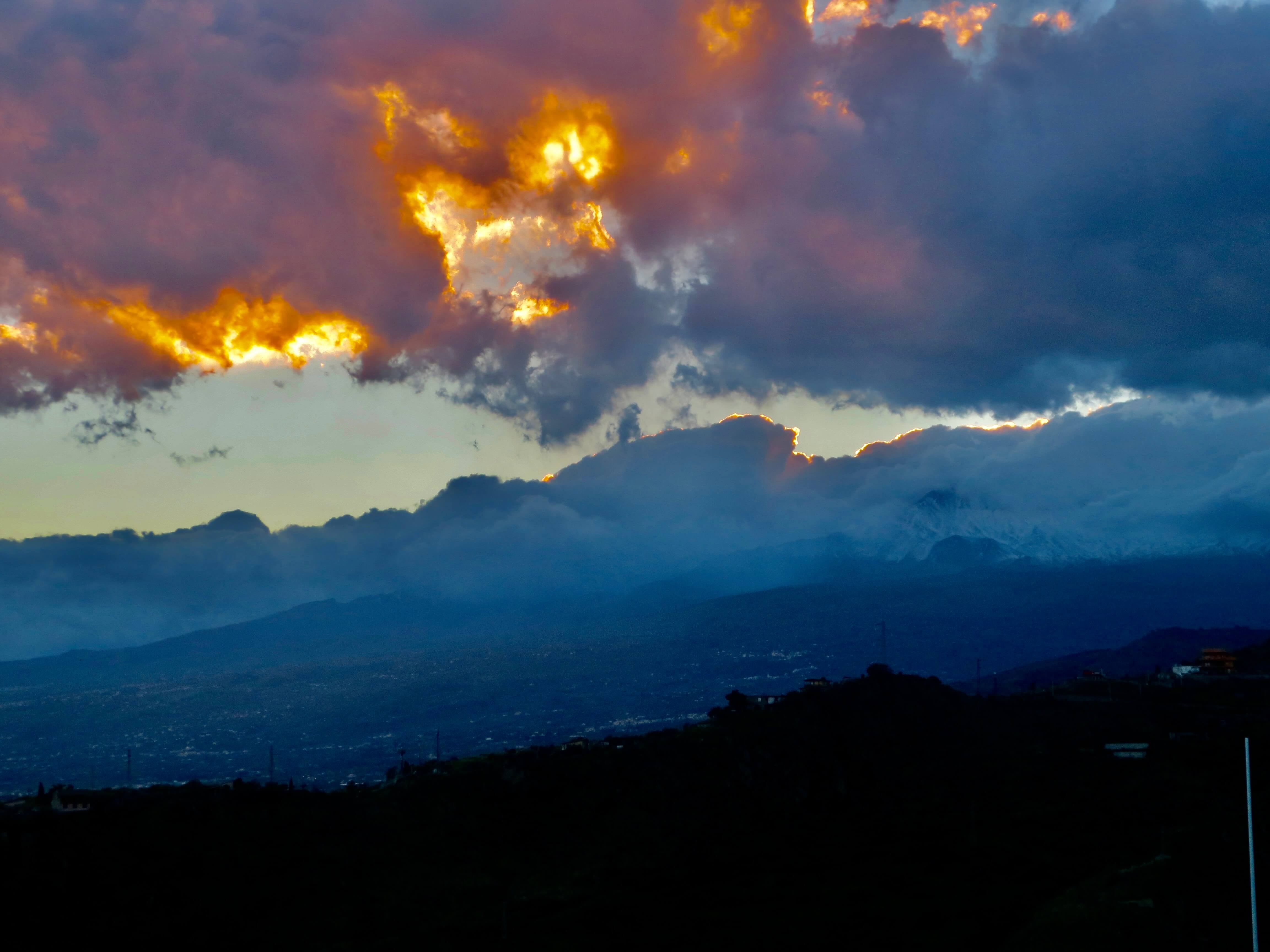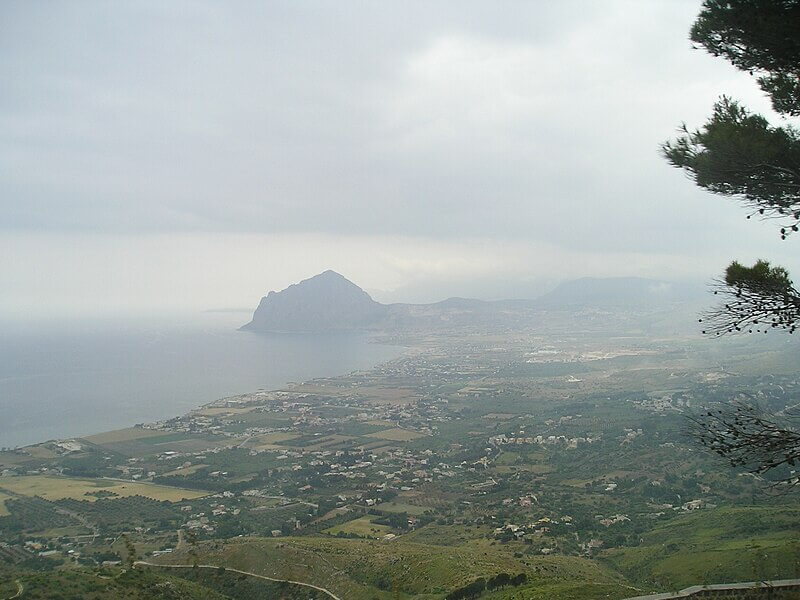- Home
- Sicilian Culture
- Religion
- Saint Rosalia
The Fascinating Tale of Saint Rosalia: A Look into the Life of Palermo's Patron Saint
The story of Saint Rosalia begins in the Middle Ages at the legendary King Roger II's court. However, she only rose to sainthood hundreds of years later when the plague ravaged the city.
Today, the annual celebrations in honor of Saint Rosalia in Palermo are among the biggest in Sicily. Rosalia's story is a mixture of religion, history, culture—and maybe even a touch of feminism.
In the 12th century, at the time of Norman Kingdom, Rosalia retreated to a cave on Monte Pellegrino, where she spent the rest of her life. Hundreds of years later, her bones became symbols of hope and protection.
Rosalia's story has inspired art and architecture throughout history. The most obvious example is the Santuario di Santa Rosalia on Mount Pellegrino, a short ride - or not-so-short hike - from the center of Palermo.
We also delve into the festivities organized in her honor and their associated traditions and rituals. These lively celebrations attract thousands of travelers and pilgrims every year.
Embark on this captivating journey into the life and legacy of Saint Rosalia, a figure of profound reverence. Discover why her story continues to captivate the hearts and imaginations of people worldwide.
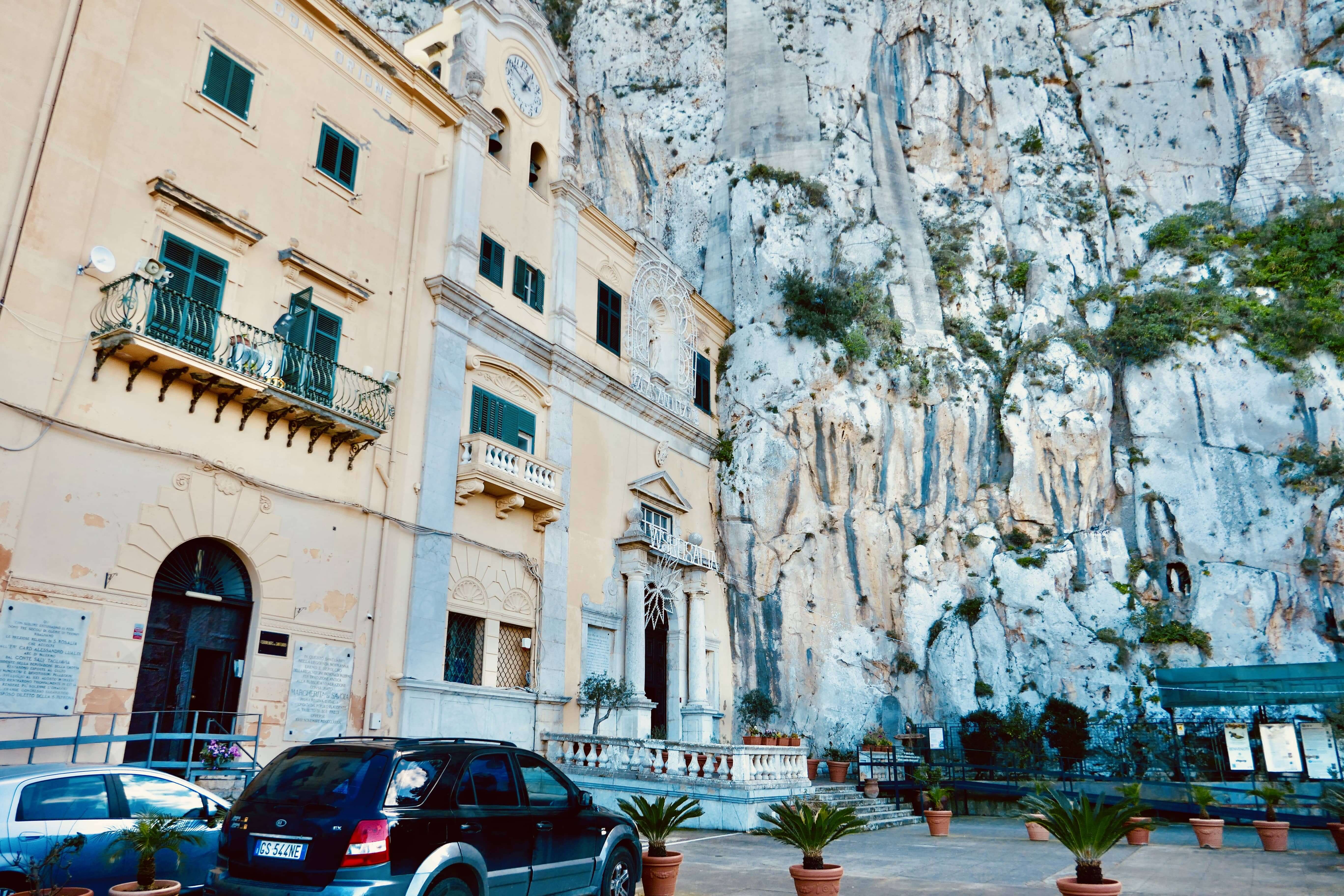 The Sanctuary of Santa Rosalia in Monte Pellegrino, Palermo.
The Sanctuary of Santa Rosalia in Monte Pellegrino, Palermo.The Life of Saint Rosalia
The actual characteristics of Saint Rosalia are shrouded in the mists of history. What is known, however, is that she was indeed the daughter of a noble family who lived in 12th-century Palermo.
From a young age, Rosalia exhibited a profound devotion to God. She chose to lead a life filled with prayer and contemplation rather than embrace the opulence of her family's lifestyle.
The turning point came when King Roger II wanted to marry Rosalia to a nobleman friend of his. Rosalia fled the matchmaking to a convent but didn't like it. From the monastery she continued her journey to a mountaintop near Bivona, in central Sicily. It is said that he went there accompanied by angels.
From Bivona, she returned closer to her home, to the slopes of Mount Erectense near Palermo. Today, this mountain is known as Monte Pellegrino (The Pilgrim's Mountain).
In Rosalia's time, the mountain was a wooded area with no human activity. That's why it had always been popular with recluses with a need to withdraw from the world.
In the cave on Mount Pellegrino, where Rosalia chose to dwell, she lived as a hermit, dedicating her life to God. She spent her days praying and meditating there, seeking a deeper connection with the divine.
The story goes that the cave Rosalia chose was so small that she could barely fit inside. It was also there that Rosalia died, aged just 36.
Although the details of her life are scarce, the essence of her spirit remains vibrant. The simplicity of her existence, combined with her profound commitment to God, resonates deeply with those who revere her.
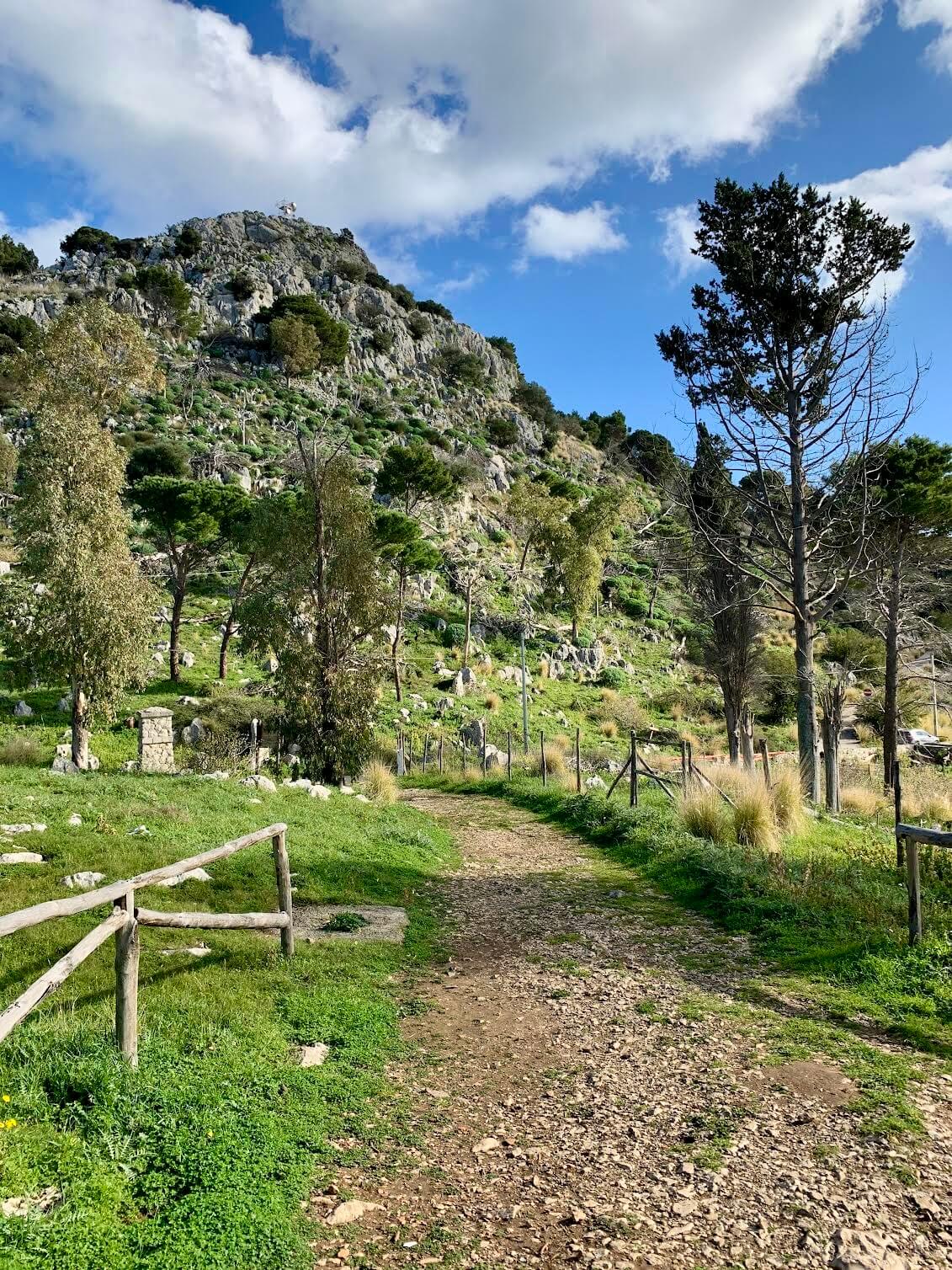 Hiking trails near the top of Monte Pellegrino. In Rosalia's time, it was covered with forest.
Hiking trails near the top of Monte Pellegrino. In Rosalia's time, it was covered with forest.The Discovery of Saint Rosalia's Remains
The miraculous discovery of Saint Rosalia's remains in 1624 marked a pivotal moment in Palermo's history. For centuries, her story had been passed down through oral tradition. Still, it was not until the early 17th century that tangible evidence of her life and sanctity emerged.
Legend has it that Rosalia appeared in a dream, first to a woman of Palermo's nobility and then to a local shepherd. In the dream, she told the shepherd where her remains were buried.
Like the rest of Italy, Palermo was ravaged by the plague at the time. Rosalia told the shepherd that the disease would disappear if her bones were transported to the city. The shepherd followed instructions, found the bones in the cave, and took them to the town.
In Palermo, Rosalia's bones were carried in a procession three times around the city, after which the plague disappeared. From then on, Rosalia became the city's patron saint.
After that, her remains symbolized hope and protection for the inhabitants of Palermo. Pilgrims flocked to view the reliquary, seeking blessings and miracles attributed to Saint Rosalia.
The discovery of her remains served as a catalyst for the growth of her cult in Palermo, linking the city's identity to her legacy. Her relics are still celebrated today, showcasing the powerful connection between faith and community in this vibrant town.
The Festivals of Saint Rosalia in Palermo
The Feast of Saint Rosalia, known as "Festino di Santa Rosalia," is one of the most celebrated events in Palermo, drawing thousands of participants and spectators each year.
This vibrant festival, held annually in mid-July, commemorates the patron saint's life and miracles. The festivities, filled with parades, music, food, and a palpable sense of joy, bring the community together to express their gratitude and devotion, honoring Saint Rosalia's legacy.
The feast of Saint Rosalia is celebrated in Palermo from 13 to 15 July. The festival is one of the biggest in Sicily. There will be a variety of shows, food and drink, and a big fireworks display at the end.
A lesser-known event happens in the night between the 4th to 5th of September. A torchlight procession will go from Palermo to the Sanctuary.
Thousands of people of all ages take part in the procession. It's a sight to behold.
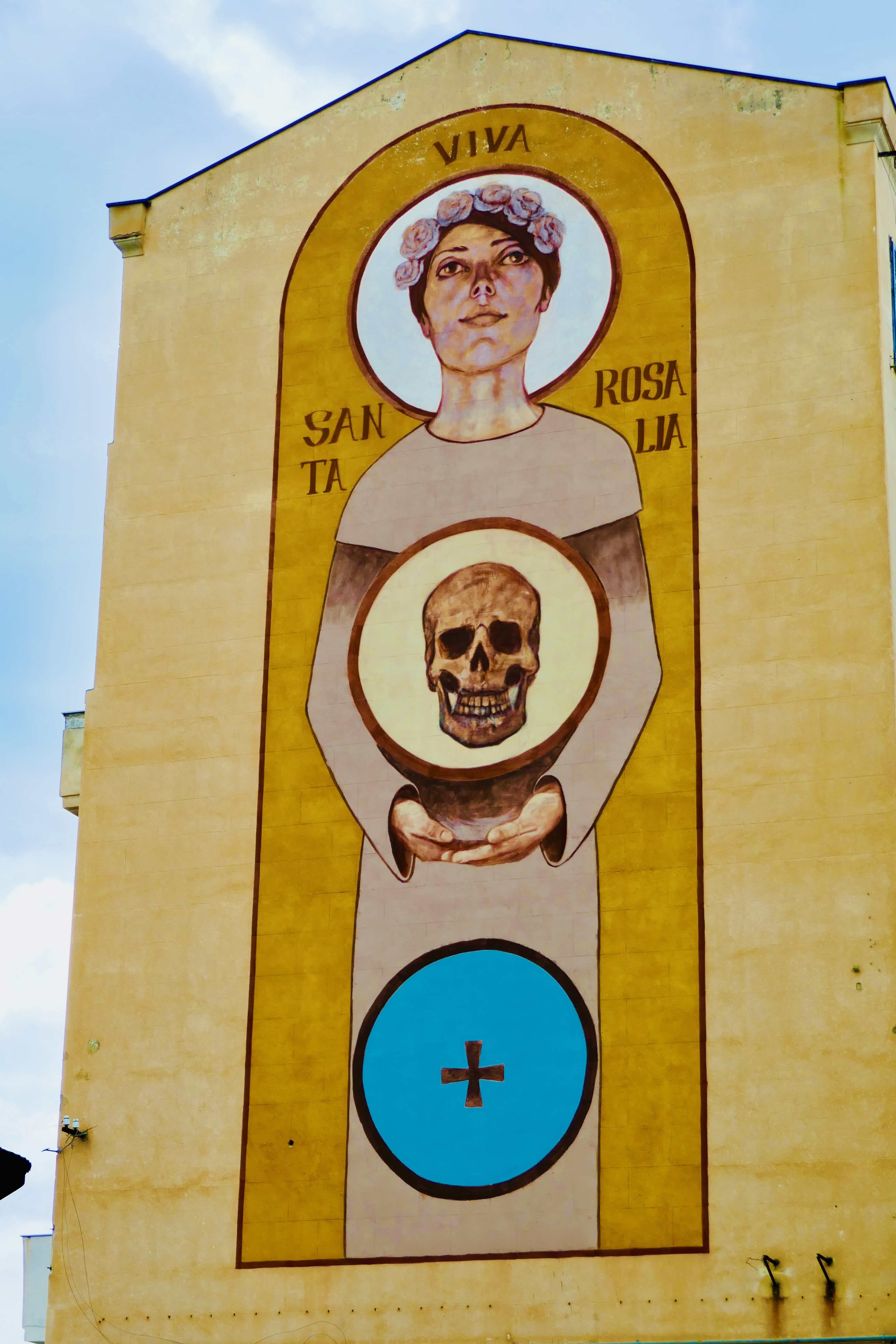 Modern depiction of Santa Rosalia in the streets of Palermo.
Modern depiction of Santa Rosalia in the streets of Palermo.Saint Rosalia's Influence on Art and Culture
Saint Rosalia's life and legacy have inspired countless works, from paintings and sculptures to music and literature. Artists throughout history have sought to capture the essence of her spirit, often portraying her in moments of divine grace or surrounded by the faithful.
People's image of Saint Rosalia is based, first and foremost, on a text by Giordano Cascini from 1631. In visual imagery, Rosalia is often depicted with a cross, a skull, and a book. It is told that she had these with her when the angels accompanied her on her journey.
Sometimes, she is depicted also with a rosary she was said to have been holding when she died.
Since the 17th century, Saint Rosalia has been a popular subject for paintings and sculptures, and each era has recreated her.
Today, she is also a popular subject in Palermo for street paintings. In these, she is often seen in a more contemporary form. For example, she may have short hair and be dressed in today's clothes.
Others see Rosalia as a kind of pre-feminist. After all, she refused to obey the patriarchy's self-imposed ambitions and chose solitude rather than forced marriage.
Official iconography still favors more traditional forms of representation. However, there is no consistent pattern. In early images, for example, Rosalia had blonde hair; now, it might as well be dark.
Therefore, the limited information on Rosalia's life allows various spiritual and pictorial interpretations.
Visiting the Sanctuary of Saint Rosalia
Carved into Mount Pellegrino's slope, Saint Rosalia's Sanctuary is a marvel that attracts pilgrims and tourists alike. As visitors approach the Sanctuary, they are greeted by the serene ambiance and the scent of fragrant wildflowers that adorn the area.
The Sanctuary of Rosalia is built inside a cave. Although the place is said to be the same, it is not the same kind of cave where Rosalia lived. A stone staircase leads up to a small church. The place itself is relatively plain but definitely worth a visit.
The interior of the Sanctuary is adorned with intricate sculptures, frescoes, and altars dedicated to Saint Rosalia, all of which create a sense of holiness that envelops the space.
Pilgrims often gather to light candles and offer prayers, seeking the saint's intercession for their needs and desires.
Visiting the shrine of Saint Rosalia is an essential pilgrimage for those interested in this revered figure.
Several buses leave from Piazza Crispi in Palermo daily, taking you straight to the cave's entrance and back. You can also walk along Monte Pellegrino's hiking trails, which run all the way between the Sanctuary and the town and offer a fantastic view of the town.
The journey to the shrine can be seen as a physical hike, a spiritual pilgrimage—whichever you prefer—or both.
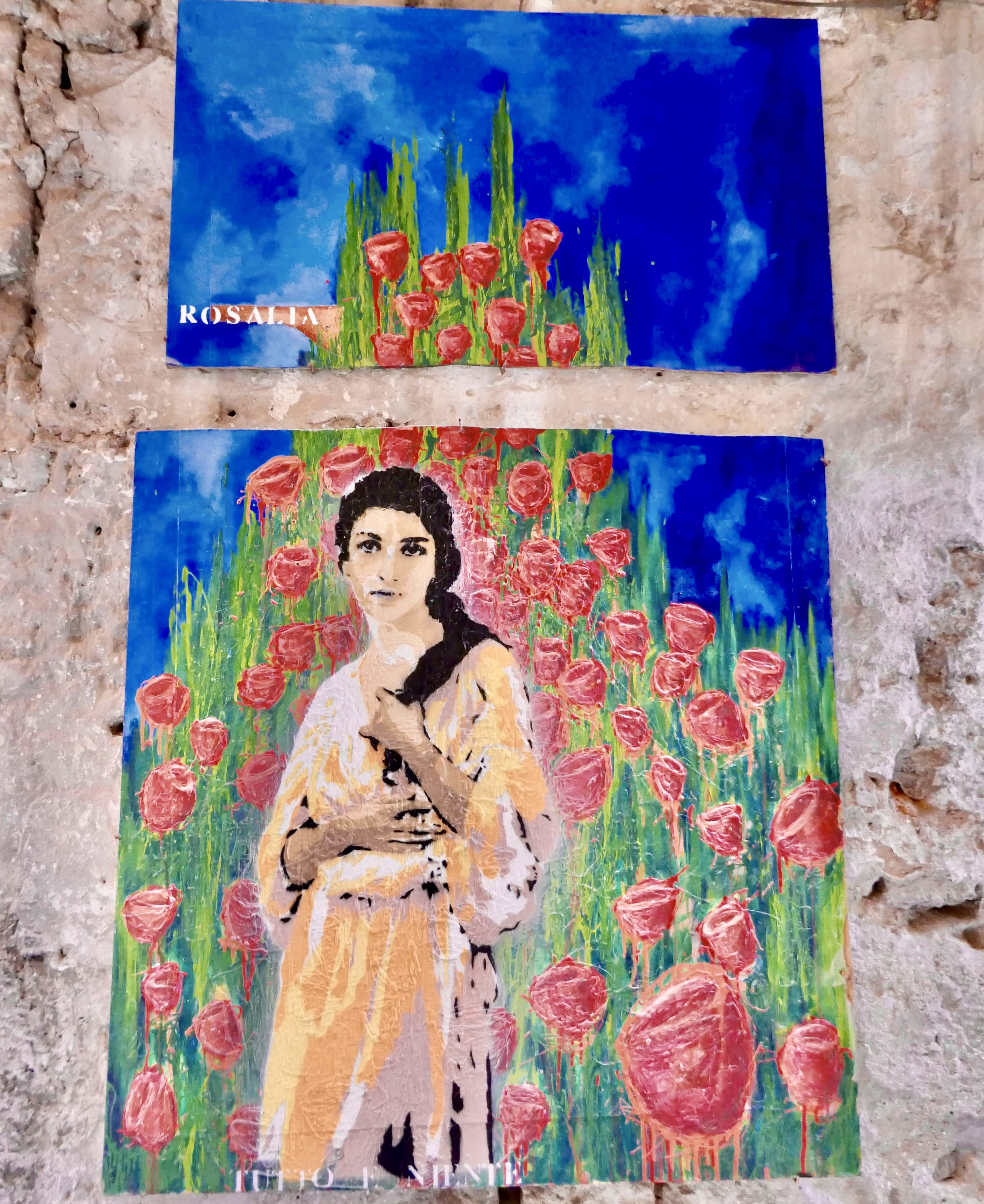 Yet another version of Santa Rosalia from the streets of Palermo.
Yet another version of Santa Rosalia from the streets of Palermo.Conclusion
The tale of Saint Rosalia is a journey through history, faith, and cultural identity. At the same time, it is an essential part of the city of Palermo's identity, symbolizing the town and all its inhabitants—wherever they come from.
Many of the legends, rituals, and artistic productions associated with Rosalia live on today among the city's residents and others who rely on her—also in other parts of the world.
Today, Saint Rosalia is a religious figure, a symbol of hope, and a source of community. This sense of community is most evident in the festivals organized in her honor.
Whether through art, music, or the simple act of pilgrimage, Saint Rosalia's influence continues to illuminate the path for countless individuals seeking connection, solace, and inspiration.
Related:
More Things to Do in Palermo (Part II)
Religion in Sicily: On the Crossroads of Faith and Culture
Saint Agatha - The Patron Saint of Catania
(This page last updated: February 17, 2025)
Recent Articles
-
Sicily Weather Around the Year
Apr 22, 25 01:34 PM
Sicily weather around the year. What to expect, when and where. -
History of Sicilian Mafia: From its Origins to the Present
Apr 22, 25 01:33 PM
History of Sicilian Mafia: Discover the secrets behind this notorious criminal organization. -
Sicilian Wines: Flavors to Delight Your Senses
Apr 22, 25 01:32 PM
Sicilian wines will leave a lasting impression. Join us as we uncork the secrets of this remarkable region!
Follow MANY FACES OF SICILY on Facebook, Instagram, Bluesky & Pinterest
Contact: vesa@manyfacesofsicily.com
